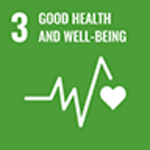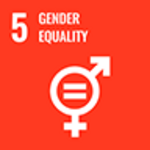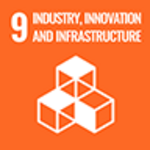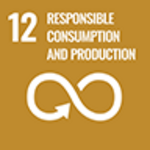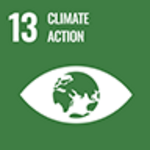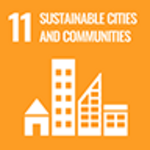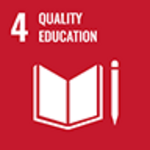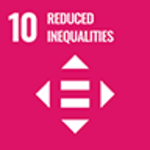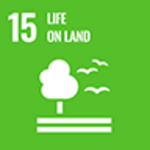
Shigetomi: Creative manufacturing is actually something that is familiar to everyone. First, if you try to combine things A and B that are around you, something new will be born from there.

Kaori Shigetomi (Kuribayashi) Project Associate Professor *Affiliations and titles are as of the time of interview (October 2020)
Professor Kaori Shigetomi (Kuribayashi) specializes in micro-nanotechnology. We are creating something new that is strange and groundbreaking by combining engineering and origami, engineering and medicine, etc. Having experienced starting a venture during graduate school, he says, ``I was able to tackle the challenge of starting a business to share my research results with the world without feeling that it was too difficult.''
"Origami stent graft" starts from a folded state
One of Japan's traditional cultures, ``Origami'' is known overseas as ``ORIGAMI'', and there is even a research field called ``Origami Engineering'' that utilizes folding and folding.
Shigetomi: That's right. When I was an undergraduate at Muroran Institute of Technology, I researched the folding of lauan leaves in order to develop solar panels that could be deployed in space.
During my doctoral course at the University of Oxford in the UK, I worked on developing medical devices using origami engineering.
When you hear origami, you probably think of how to fold the paper from its ``open'' state, but in fact, the growth of leaves and the horns of larvae in the natural world are very neatly ``folded'', which is what makes a design. This is the starting point.
The concept of something being folded and gradually unfolding into a completed form is the complete opposite of what we think of origami. I feel that there is so much we can learn from the natural world.
The origami stent graft, a medical device used to expand narrowed blood vessels, was inspired by a design that begins with this folded state.
We trained the shape memory alloy to learn a folding method known as ``sea cucumber fold'' in Japan and ``pineapple pattern'' overseas, creating a structure that gradually opens when it reaches a certain temperature inside the body.
This makes it easier to insert into the body and reduces the risk of damage to the stent itself.

Origami stent graft made from shape memory alloy sheet. Due to its shape memory characteristics, it appears to self-deploy at 34 degrees (near body temperature).
Universities also have the option of starting a business in order to directly send their research results to society. Dr. Shigetomi also has experience in starting a business by developing origami stent grafts.
Shigetomi: My academic advisor and the campus environment were both positive towards starting a business, so it was a natural choice for me. The experience of studying various things related to starting a business at that time is still very useful to me, and I don't feel that the hurdles to starting a business are too high.
Of course, specialized study is necessary, and there are many things to do other than pure research, but if you think, ``I'll start a business after all the preparations and environment are in place!'', you'll never be able to do it.
If there is momentum and it looks like we can form a good team, I think it's worth a try.
Cell culture that challenges the world from 2D to 3D by folding cells
After returning to Japan, Professor Shigetomi's next project was ``cell origami''. Please explain.
Shigetomi: For example, when we study the effects of reagents on human cells to create new drugs, we culture the cells in petri dishes. However, since our human bodies are made up of three-dimensional structures, strictly speaking, there is a difference between culturing on a flat surface of a petri dish.
Furthermore, it takes many years for animal experiments to be applied to human clinical practice, and everyone involved is saddened by the fact that patients suffering from the disease are kept waiting. I think.
In order to solve these problems, we needed technology to culture human cells three-dimensionally, and the clue to this came from origami. "Cell origami" is a combination of origami and cells (biological materials).
To tell you the truth, this technique came about by chance from another experiment, and the moment I accidentally poked the cells I was examining with a microneedle, they shrunk. The moment I saw that, I had an epiphany, "Huh? Maybe I can use the movement I'm using now."
Utilizing this cell shrinkage force, origami cells are attached to a culture base, and when stimulated, they fold into a three-dimensional shape, much like a 3D dice is created from a 2D dice development.
I remember feeling so excited and shaking in my hands when I realized this possibility and thought to myself, ``I can definitely do this!'' as I experimented.
If our research progresses further, we believe that we may be able to contribute to further medical advances, such as repairing wounds within the human body without requiring open surgery.

One of the mechanisms of cell origami is to use the traction force of the cells to raise the wall material into a three-dimensional shape and adhere it.
I heard that you are also conducting drug discovery research using three-dimensional cell culture technology.
Shigetomi: We are working on a cell-adhesive 3D cancer culture model using human cancer cells in collaboration with Dr. Yuko Miyatake of Hokkaido University School of Medicine.
Cancer drug discovery research has made remarkable progress, but to be honest, the fundamental problem is that the behavior of cancer cells, such as invasion and metastasis, cannot be accurately reproduced on the flat surface of a petri dish. There was an issue.
Therefore, we combined my specialty, micro-nanotechnology using semiconductor processing technology, with Dr. Miyatake's specialty, pathology (patient cancer tissue applied during surgery), to develop the basic structure of cancer lesions. This is the first time in the world that we have succeeded in reproducing a three-dimensional image outside the body.
Simply put, we create something like a scaffold on which cancer cells grow in layers on top of the device. This enabled us to visually capture the true nature of cancer cells that have survived without being cured by drugs, namely the behavior of cancer cells that pretend to be dead by eating surrounding dead cells.
Once this culture model is completed, it will be possible to evaluate the efficacy of cancer drugs to determine whether they are working or not, and determining the malignancy of cancer will no longer be a dream.
I am currently working towards starting my own business, thinking that it could be used for future drug discovery and development.
It is surprising that the origami that we all played with when we were children could be connected to cancer drug discovery.
Shigetomi: I believe that these new discoveries were made possible because of the fusion of the different fields of engineering and medicine. On a personal note, I lost my mother to cancer, so I feel more passionate about cancer treatment than anyone else. I want to reduce the number of people who suffer and grieve due to cancer. With this in mind, we are working on innovation in cancer drug discovery.
Something New is born from familiar multiplication
Professor Shigetomi also teaches seminars in the graduate school education course at Nitobe College. What do you want to convey to your students?
Shigetomi: I always think that even if it takes time, I hope that my research and activities will lead to helping people and improving the environment in the future. I think it would be great if I could show this to people.
What I want to convey to all students is to try to approach a problem from various perspectives. Studying at a university is not research for a company that prioritizes results. I would like people to think freely and creatively without being too tied to direct solutions.
I think this is partly due to the uniqueness of the research called ``origami engineering,'' but students often ask me, ``You always come up with surprising ideas in your research. What is the source of your ideas?''
However, while creative manufacturing is often thought of as something that comes from the inspiration of a few geniuses, it is actually something that is familiar to everyone.
I think "Something New" is born from the multiplication of "What if we try multiplying A and B that we have around us?"
Personally, I would say, ``Why don't you take the things you're having trouble with in your daily life and add the features of origami and micro-nano technology?'' But I'm sure everyone has something they're good at or something they're curious about.
We recommend that you start by thinking about things that are more familiar to you, like adding a heavy suitcase and self-propelled wheels to a carry case.

What is necessary for a society where people can play an active role regardless of gender?
Shigetomi: As a female researcher, I am concerned about gender equality (rectification of gender disparity), but I don't want to make a loud statement like ``Women can become researchers even if it means gritting their teeth!'' I hope that the time will come when it will become a natural choice for women to be active in the engineering world.
The same goes for starting a business earlier. If you can find someone who is working on something first, you will naturally think, ``Maybe I can do it too.'' In this day and age, both women and men have a variety of options, so I want them to think freely and not think ``I have to do this!''.
I myself would like to continue to be a teacher who people can feel free to consult with regarding such matters.

Kaori Shigetomi (Kuribayashi) Specially Appointed Associate Professor
Affiliation: Hokkaido University Institute for the Advancement of Higher Education *Affiliations and titles are as of the time of reporting (October 2020)
Born in Takikawa. Dosanko grown in Eniwa, Shizunai, and Sapporo. At the university, he aims to develop solar panels that can be deployed in space, and will research the unfolding and folding of lauan butterfly leaves as a model in the natural world. While studying abroad in the United States, he took a medical class and decided that he wanted to use his engineering knowledge to contribute to medical care. In his master's degree program at Hokkaido University, he conducted research on the development of medical devices, and in his doctoral degree program at the University of Oxford in the United Kingdom, he developed an origami stent-graft, a medical device that utilizes the folding pattern of origami. Since then, he has conducted various research as a doctor of origami engineering. After returning to Japan, at the University of Tokyo, he developed the ``cell origami'' technology, which uses micro-nano processing technology to fold cells like origami and culture them three-dimensionally. Currently at Hokkaido University, he is conducting research with the aim of applying cell origami technology to regenerative medicine.

















